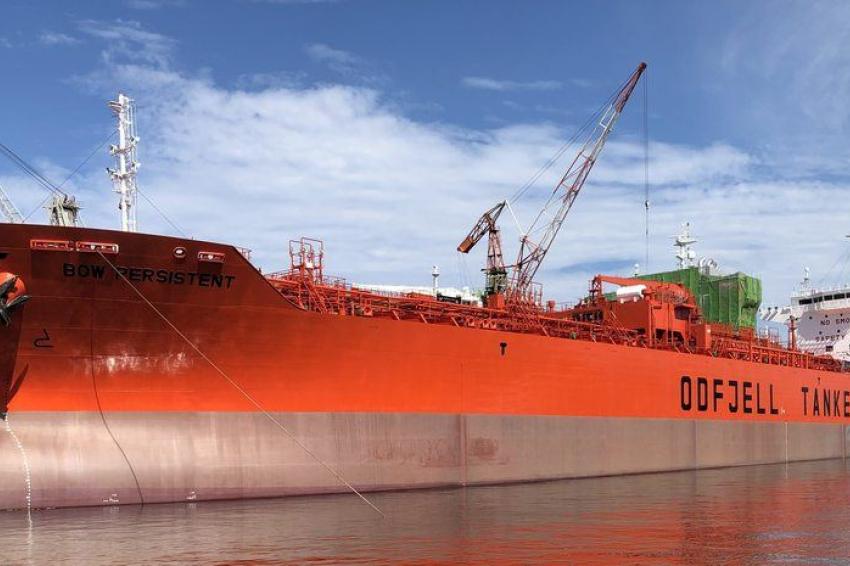Bow Persistent Joins Odfjell Fleet
06.07.2020 - The newly built chemical tanker Bow Persistent has entered Odfjell’s 80-ship fleet, joining sister ship Bow Prosper in the Norwegian group’s round-the-world trade. Built at the Fukuoka shipyard in Nagasaki, Japan, the 36,000 dwt vessel comprises 28 stainless steel tanks.
Odfjell said the sister ships are tailored with technology and features for the advanced chemical tanker segment. They are two out of a total of 30 new vessels to join Odfjell’s fleet between 2017 and 2020.
Bow Persistent is on bareboat charter from Japanese shipowner Taihei Kaiun and will be commercially managed by Odfjell Tankers.
Commenting on the impact on shipping from the Covid-19 pandemic, Odfjell said demand still looks likely to continue surpassing net fleet growth in the years to come. The Bergen-based shipping and storage explained that tonne-mile demand has surpassed net fleet growth for chemical tankers since the second quarter of 2018, driven particularly by the start-up of new export-oriented liquid chemical plants in the Middle East and USA during 2018-2019.
Consequently, the stronger markets experienced pre-coronavirus has played a role in why the impact from the pandemic has not been as severe as initially feared as fleet utilization was improving, it said, noting that demand for both organic and inorganic chemicals was strong in the first quarter of this year.
However, Odfjell estimates that 28% of seaborne liquid chemicals trade has been negatively affected by the effects of the virus on the global economy, mostly related to organic chemicals but also partly to the construction and automotive industries.
Looking forward, limited growth in new export-oriented liquid chemicals capacity in 2021-2022 will ‘normalize’ tonne-mile demand growth. Odfjell forecasts tonne-mile demand will grow between 2% and 4% on average between 2020 and 2022, dependent on the pace of recovery after Covid-19.
In addition, emissions regulations for shipping will have a positive effect on fleet growth until 2022 and possibly also beyond. The Norwegian group said a large share of the tanker fleet needs replacing by 2025 in order to comply with future emissions regulations but there is currently a dilemma about the choice of propulsion. Odfjell said existing propulsion alternatives are not compliant, technically feasible or readily available, which should keep a lid on speculative new orders. It estimates fleet growth to average just 1% per year between 2020 and 2022.




